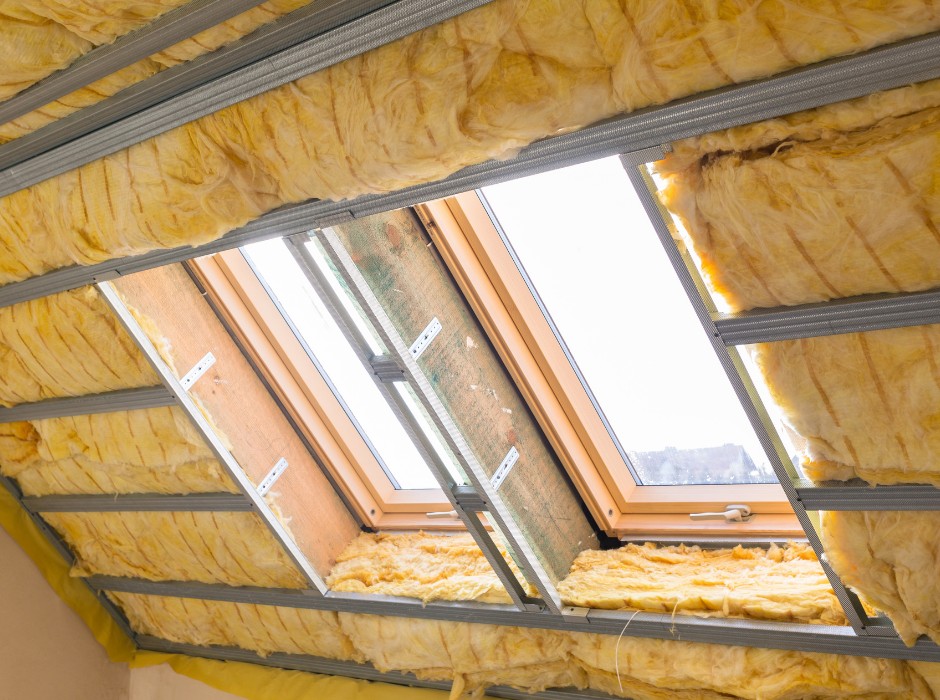If you have heard about roof insulation and are interested in understanding what it means to insulate your roof and the options available to you, then you have come to the right place. This blog post will provide comprehensive answers to all your burning questions regarding roof insulation. Here, we will cover the benefits of insulating your roof, the different types of insulation materials, how to choose the best option for your home, and the various environmental and economic advantages of insulating your roofs. So, sit tight and get ready to learn a thing or two.
What is roof insulation?
Roof insulation is a method used to reduce the amount of heat that escapes through the roof of a building. This practice involves the installation of insulating materials in the roof space to create a barrier that slows down the transfer of heat, thus keeping your home warmer in the winter and cooler in the summer. When you insulate your roof, not only will your home become more comfortable to live in, but you will also be helping your finances and the environment while you are at it. For the economic part, insulating your roof will help lower your energy bills significantly, ensuring that you spend your money on other important things.
When it comes to roof insulation, especially for pitched roofs, there are two main options available: warm insulation and cold insulation. In the next section, we will explore the differences between these two methods, including their installation processes and where on the roof they are installed.
Cold Insulation
This type of insulation typically traps heat and then prevents it from escaping your home. This type of insulation is only useful in the winter, as it ensures that you experience warmth and, of course, comfort throughout the cold season. As you would expect, cold insulation is not as expensive as warm insulation because of its limitations. Additionally, the installation of cold insulation can be done by homeowners as a DIY project; all you have to do is place the insulation material above and between the wooden beams, above the ceiling of the top floor of your home.
Warm Insulation
This type of insulation is placed under the roof, where it traps heat and ensures that it doesn’t escape. However, unlike cold insulation, warm insulation can give you the comfort you need during the winter and summer. In the summer, it stops your home from becoming excessively hot or cold in the summer and winter, respectively.
What are the Benefits of Insulating Your Roof?
There are numerous benefits to insulating your roof, and in this section, we shall discuss some of them.
Helps to save energy and money:
Two of the most popular appliances found in homes are air conditioners and heaters. While the former cools the inside of the house, the latter does the opposite. However, despite their crucial role in ensuring we stay comfortable in our homes, they also consume a significant amount of energy, thereby increasing the home’s electricity bill. Home heaters, for example, use about 20kWh per day, while the average air conditioner uses about 10kWh per day.
If you add the two together, you will realize that a significant portion of your electricity bill has been spent on powering these devices. Now, when you insulate your roof, not only will you see a significant reduction in your electricity bill, but you will also be more comfortable in the winter and summer as the heat exchange between the inside and outside of your home is minimized. In winter, insulation will help retain the warmth generated inside your home, keeping the cold air out. Conversely, in the summer, the intense outdoor heat will be prevented from penetrating your living space, ensuring a cooler indoor environment.
It helps to reduce noise pollution
Roof insulation significantly reduces the frequency of noise entering your building from outside and vice versa. By limiting the movement of air, insulation helps reduce wind noise and other external sounds. Additionally, it prevents air from moving through the attic, a common pathway for sound in a home, thereby further reducing noise levels. With insulation material installed on your roof, you and your family can enjoy a quieter and more peaceful indoor environment.
Environmental Impact:
When you insulate your roof, you are also, in a way, contributing to environmental sustainability. By reducing your energy consumption for heating and cooling, you decrease the demand for power plants, which in turn makes your home more eco-friendly and also supports global efforts toward environmental conservation.
It helps to improve the lifespan of your roof.
It has been found out that insulating one’s roof can help prevent it from experiencing damages such as warping, cracking, or degradation as a result of extreme temperature fluctuations, which cause the roofing materials to expand and contract. Additionally, insulation can prevent the buildup of moisture in the roof space. Moisture can cause mold growth, wood rot, and rust, all of which can degrade the structural integrity of your roof over time.
Roof insulation improves the structural health of your roof by controlling temperature and moisture levels, extending its lifespan and reducing the need for frequent repairs or replacements. This not only saves you money in the long run, but it also ensures that your home is adequately protected and durable.
Choosing the best insulation for your home’s roof
Selecting the right roof insulation for your home is a crucial decision that can impact your comfort, energy efficiency, and long-term savings. At Shoreline Roofing & Exteriors, our team of roofing experts is ready to guide you through the various insulation options and help you find the perfect solution for your home while also considering your budget.

